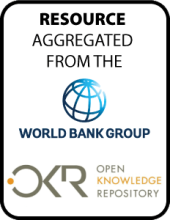Land Library Search
Through our robust search engine, you can search for any item of the over 73,000 highly curated resources in the Land Library.
If you would like to find an overview of what is possible, feel free to peruse the Search Guide.
/ library resources
Showing items 1 through 9 of 144.This note is part of an Action Notes series and provides guidance for governments and companies on how to ensure that the impact of agricultural investments on water resources is effectively measured, monitored, and regulated.
This note is part of an Action Notes series and provides guidance for governments and companies on the overall approach to consulting, engaging, and partnering with local communities, to bridge gaps in information and expectation between communities and companies and create the social license to
/*-->*/
This note is part of an Action Notes series and provides guidance for governments and companies on how they can provide effective remedies to affected parties who perceive that their rights have been adversely affected by invesments.
This note is part of an Action Notes series and provides guidance for governments and companies on practices to reduce gender inequalities and to empower women to make a positive contribution to development through agricultural investments.
This note is part of an Action Notes series and provides guidance for governments and companies on how to ensure that an agricultural investment generates positive impacts on the local economy by encouraging and supporting opportunities arising for individuals, farmers, businesses, and institutio
Improving the productivity of
smallholder farms in Sub-Saharan Africa offers the best
chance to reduce poverty among this generation of rural
poor, by building on the limited resources farming
Rice is the world’s most heavily
consumed staple crop. Its production requires enormous
volumes of water and emits large quantities of atmospheric
methane, a greenhouse gas some many times more powerful than
The purpose of this paper is to provide
information on how to transform and strengthen pluralistic
agricultural extension and advisory systems in moving toward
the broader goal of increasing farm income and improving







